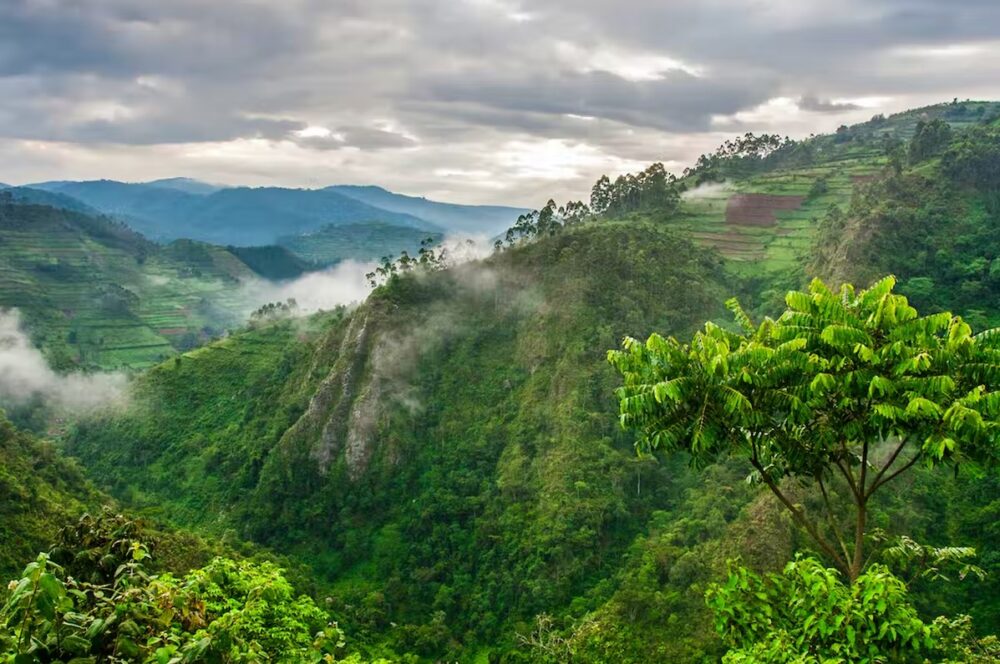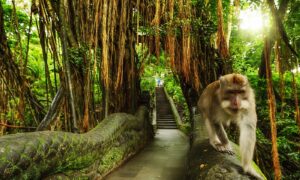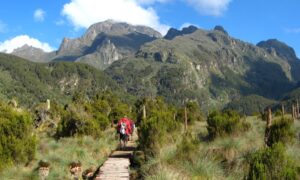Bwindi Impenetrable Forest is one of the only four national parks in the world that protect mountain gorillas. Located in southwestern Uganda, Bwindi is known for supporting almost half the world’s remaining mountain gorillas; a major “see them before you die”-tourist draw into East Africa.
Gazetted as Bwindi Impenetrable National Park, this protected area is located in southwestern Uganda on the rim of the East African Rift Valley. The impenetrable forest is characterized by steep valleys and high ridges. The hillsides are mist covered and are sheltered by ancient biologically varied rainforests that date back to about 25,000 years. It lies in an altitude range of 1160m and 2607m above sea level.
The ancient rain forest lies in the backdrop of towering dormant volcanoes that include the eight Virunga Ranges. It is situated in a hilly countryside characterized by some remnant lowland forest that is also an important water catchment area for many rivers.
Mountain gorilla trekking is one of the top bucket list activities the impenetrable tropical rainforest has to offer. With the positive reviews around the gorilla trekking experience in Bwindi National Park, it is very easy to assume that gorilla trekking is all that the impenetrable forest has to offer.
However, the gorilla trekking experience is simply one of the many ways through which you can explore Uganda’s impenetrable forest. In order to make the best out of your visit in Bwindi, it is recommended you consider the following activities.
Birding
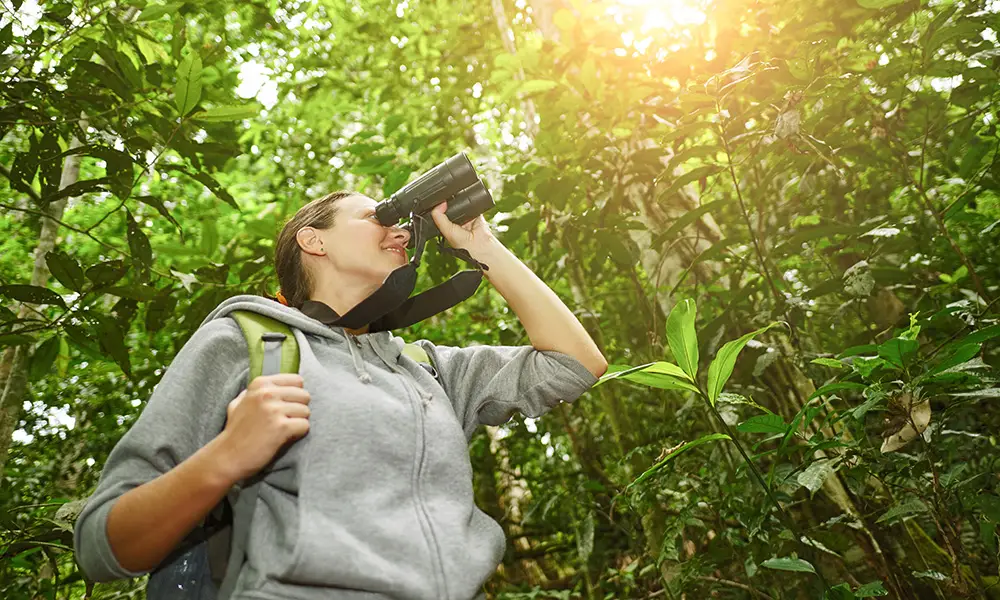
Source: indiabirdwatching.com
It is very common for people to assume that birding is mainly about bird watching but the main activity in Birding is photography. It is one of the few known ways to capture moments of different bird species.
Each bird species tends to have an array of characters distinct from other bird species. Watching and photographing these moments is such a wonderful experience but it actually made better when you are doing it in a place where you will neither suffocate with coldness nor melt down with too much heat.
Uganda’s impenetrable forest hosts over 348 different bird species that call the forest home. Species regarded by birders as specials to the park include Black-billed turaco, Yellow-eyed black flycatcher, Black bee-eater, Kivu ground thrush, Grauer’s warbler, Bar-tailed trogon, and really too many more to mention.
During the birding experience, you have to opportunity to visit some of the least explored parts of the park. I still think birding is the best way to explore Bwindi’s impenetrable forest.
Mountain Gorilla Trekking
The park hides the gigantic mountain gorillas that live in only three countries. The mountain gorilla is one of the two most endangered apes in the world with the other being the cross-river gorilla that thrives in West Africa.
Uganda’s Bwindi Forest is subdivided into four sectors ─ Ruhija, Rushaga, Nkuringo, and Buhoma. Once you choose to gorilla trek in Bwindi, your gorilla trekking permit will only allow you access to one of these sectors upon booking.
In other words, if you book a gorilla permit in Ruhija, it means you will trek gorillas in this sector alone denying you the opportunity to explore other sectors of Uganda’s impenetrable forest.
The challenge posed by gorilla trekking is commonly the limited time you get to explore the forest. Your main agenda in the forest is to find the endangered mountain gorillas. This implies that your trip comes to an end once you encounter the mountain gorillas thus denying you the opportunity to explore the rest of the forest.
However, it is important to note gorilla trekking in itself is a worthwhile experience that everyone should at least have once in a life but it is still the main abstraction behind exploring Uganda’s impenetrable forest.
Forest Nature Walks
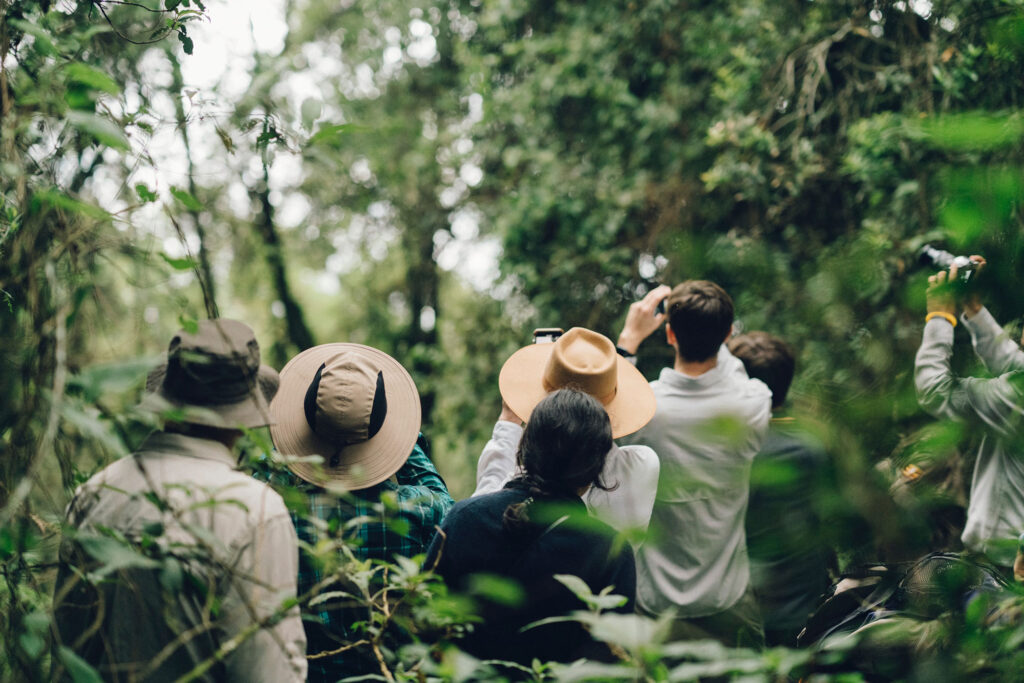
Source: safariventures.com
Next to forest birding, nature walks are another recommended way of exploring the Bwindi forest. This forest has over ten forest trails. These include but are not limited to the Kashasha river trail, Bamboo trail, Rushura hill trail, Ivy river trail, Mubwindi swamp trail, and waterfall trail among several other trails.
Through the few mentioned trails, you realize that there are swamps in Bwindi, rivers, Bamboo forests, and waterfalls among several other things that make this impenetrable forest special.
It is only the lucky few get the opportunity to walk past these features during gorilla trekking. A true Bwindi impenetrable forest safari takes you on a journey of hills, valleys, swamps, and waterfalls garnished with encounters with typical wild animals. It isn’t merely gorilla trekking.
Forest trails help you to explore some parts of Bwindi that only a few tourists get to see.
Community and Batwa Experience
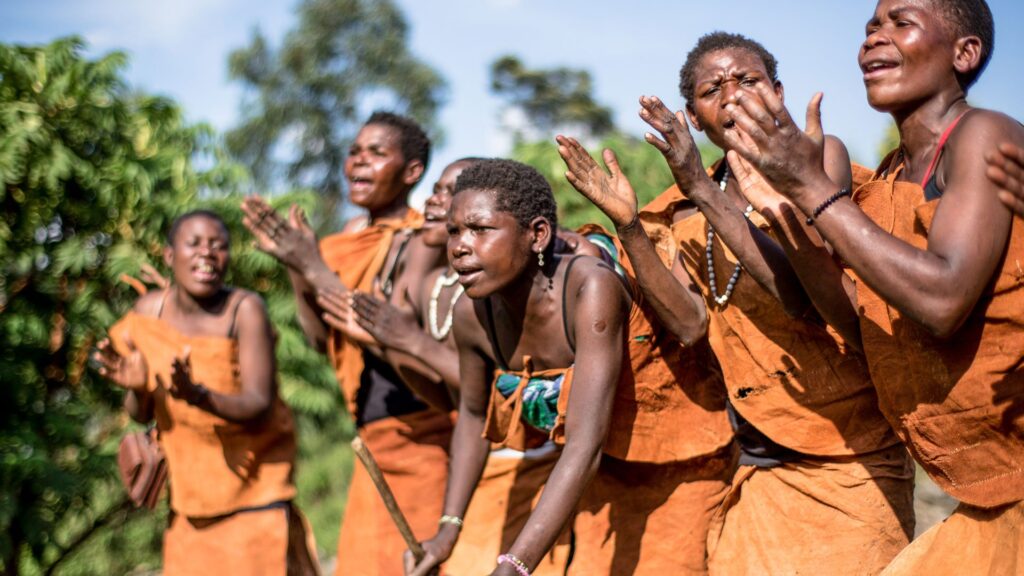
Source: andbeyond.com
A lot can be said about the local communities around the Bwindi. Most of them are starting to transition into modern life and developed tourism but they can still take you through their ancient lifestyle. Among the things that the Batwa experience offers are making fire traditionally, and hunting among several other activities.
The Batwa experience is one of the unique ways to explore the forest. These local people will take you through how their hunting life used to be before they were taught to adopt sustainable living.
Wildlife To Expect in Bwindi Forest
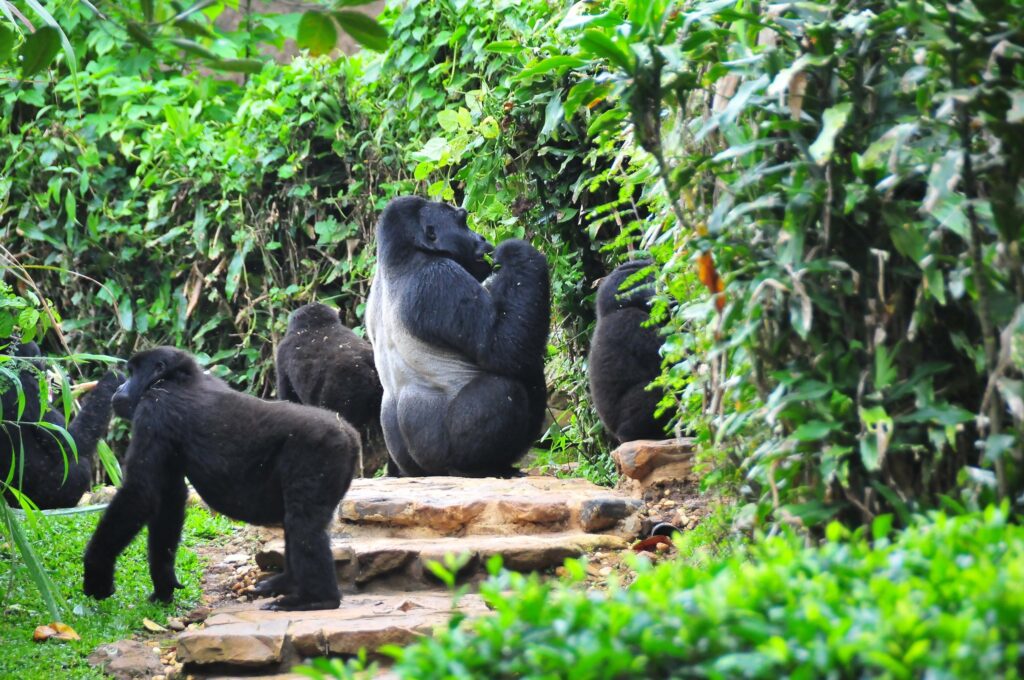
Source: bwindiugandagorillatrekking.com
Aside from the mountain gorillas, the park also hosts endangered chimpanzees, another amazing great ape that lives within the forest.
The park hosts a total of 120 mammal species. Popular mammals include the Black and white colobus monkey, chimpanzee, elephant, bushbuck, buffalo, civet cat, bushpig, giant forest hog, black-fronted duiker, yellow-backed duiker, clawless otter, genet, and many species of bats and rodents.
Conclusion
Bwindi is the ultimate destination frequented by tourists looking to gorilla trekking in Africa. These great apes are jealously protected by the international community given that there are just about 1050 individuals left in the tropical rain forests of Africa.
The mountain gorillas are classified as endangered by the International Union for Conservation of Nature (IUCN) and thus need your support to ensure that they are conserved for not only the present generation but also for our great-grandchildren.

